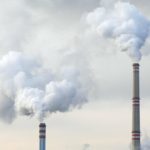Will the avocado be a sign of the past? This question is gaining increasing relevance as scientists begin debating the effect of climate change on global food systems. With an increasing global population and shifting weather patterns, agricultural production is under growing pressure. More disturbingly, the areas forecast to be most affected by climate change include some of the world’s most important agricultural areas, like the American Midwest and South American tropics. Rising temperatures will also threaten the livelihoods of the rapidly growing populations of sub-Saharan Africa, worsening issues of poverty and malnutrition. China also is facing a significant threat in the form of increasing desertification of its farm land. Shortages of certain food items such as wheat and avocados have already begun to occur. The combination of these trends foreshadows an increasingly precarious future for the world’s most popular crops, including rice, wheat, and corn.
For generations, farmers have had to combat the plagues of storm and drought to ensure a bountiful harvest. With climbing temperatures and erratic weather patterns, this job has become progressively difficult. Worryingly, climate change is already having an impact on the growing patterns of critical commodities such as wheat, corn, and soybeans. The world’s most productive wheat growing regions have had to confront hotter summers and periods of drought. In 2011, a catastrophic drought in Russia and Ukraine resulted in a massive decline in the year’s wheat harvest. This decline in agricultural production not only affects local communities, but can have far-reaching consequences. Some experts have speculated that Russia’s drought may have influenced the outbreak of the Arab Spring, arguing that rising prices for wheat may have sparked political unrest in the Middle East.
Similarly, in the American Midwest, corn farmers are facing hotter growing seasons and increased reliance on irrigation. This has resulted in farmers being forced to drill further and further into the water table. Moreover, establishing seedlings into the soil has become a difficult endeavor. Spring precipitation has become more intense, leaching nutrients from the soil and washing away seeds in the process. The combination of these struggles is especially concerning since the US produces roughly 40% of the world’s corn supply. In addition, soybean farmers have had to battle against changing climate conditions. Researchers have estimated that American soybean farmers have already lost $11 billion in unrealized potential harvests. Brazil, another major corn and soybean exporter, is perhaps facing an even grimmer climate trajectory and will likely see its own industries struggle.
Increased prices for corn and soy have significant consequences down the food chain. Livestock, for example, are primarily fed diets of corn and soy products. As harvests are disrupted by climate change, the prices for commodities will increase. Already farmers are being forced to examine new seed varieties that can withstand rising temperatures and drier conditions. Such varieties are often much more expensive than the traditional seeds that were previously used. These costs are then passed down to consumers that experience higher prices for meat in the supermarket.
Moreover, the higher temperatures and wetter conditions in certain areas provide a welcoming habitat for the growth of parasites and pests. Scientists from the Universities of Exeter and Oxford have estimated that pests are expanding their ranges at an average of two miles per year. Shorter winters allow pests to migrate into areas where they did not previously have a presence. Pigs and poultry that live together in close proximity will become more prone to opportunistic infections that thrive in warm environments. Occurrences of Avian Influenza are expected to intensify, threatening global bird populations.
Climate change is also already affecting some of the world’s most beloved indulgences such as coffee, chocolate, bananas, and avocados. Chocolate farmers in Ghana are having to contend with hotter conditions that threaten the survival of cacao trees. One of the world’s largest chocolate companies, Mars, has already begun to voice concerns over climate change and sought to pursue different sourcing strategies. The popular American chain restaurant Chipotle has struggled to keep guacamole on its menu as the yields of avocados have been affected by climbing temperatures and water shortages. Coffee farmers are also having to contend with diseases such as coffee rust and pests like the coffee berry borer that threaten to derail harvests.
Some nations, faced with growing populations and shrinking amounts of arable land, have already begun buying agricultural areas in other countries. China for its part has purchased land for farming in Africa and Australia, and was recently granted approval to buy the Swiss seed giant Syngenta. Saudi Arabia has also bought land in California to ensure that its dairy farmers have access to alfalfa. While China and Saudi Arabia have the resources to pursue such a solution, many other countries will be faced with increasingly tough choices on how to secure food for their populations.
Unfortunately, the amount of temperature change for many areas remains to be seen. While the global community has slowly begun to take the risks of climate change seriously, it is unlikely that present efforts are enough to fully prevent these changes. Already farmers across the world are facing an increasingly erratic climate that makes it difficult to produce adequate harvests. Moreover, any potential backsliding of commitment to decreasing emissions by the United States or China would most certainly accelerate the process. Without substantive actions, higher food prices and increasing scarcity will be the new reality. Policy makers must assist those farmers that will be most adversely affected and ill equipped to grapple with such challenges. Strategies to reduce food waste, particularly in the United States and Western Europe, must also be pursued.
- Yemen Crisis: Has a Turning Point Been Reached? - February 8, 2018
- Monster Viruses and Dangerous Diseases: How Climate Change Threatens to Upend Global Health - February 8, 2018
- Uncertain Trajectory: Kazakhstan’s Perilous Path on the World Stage - November 1, 2017






